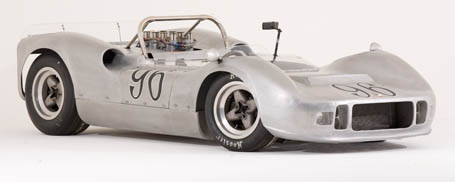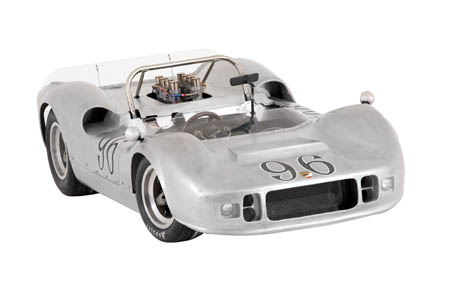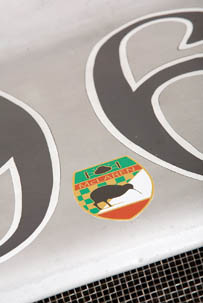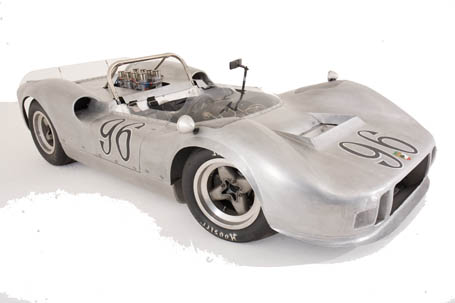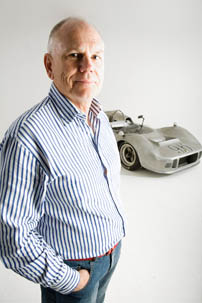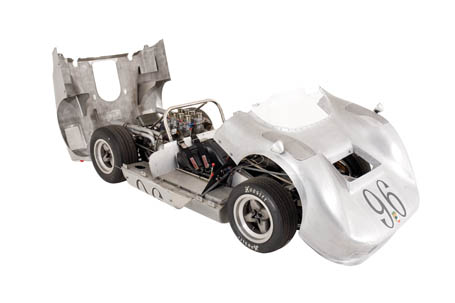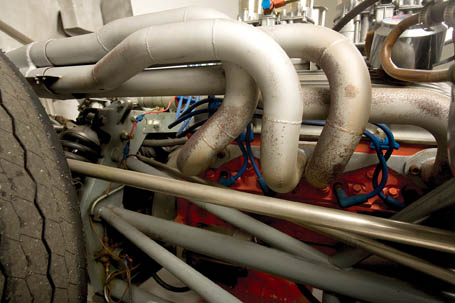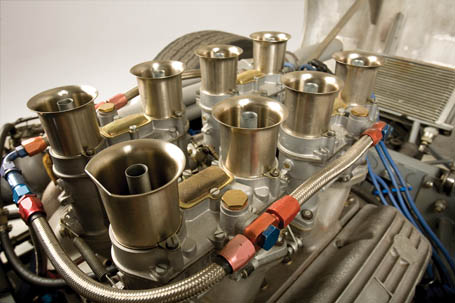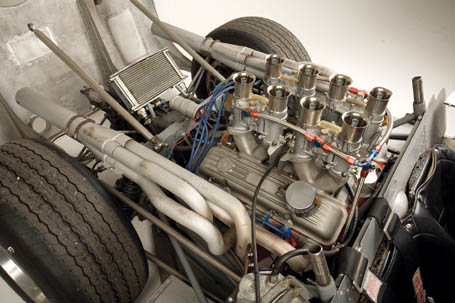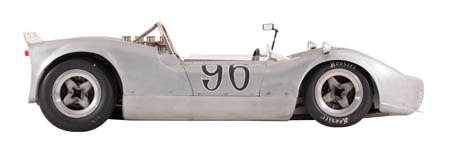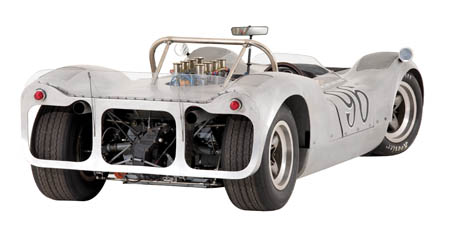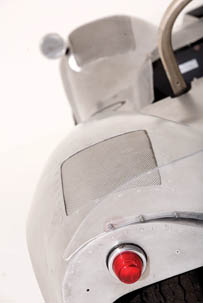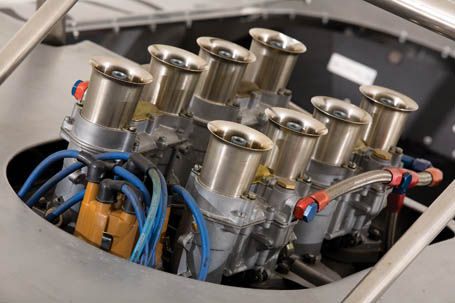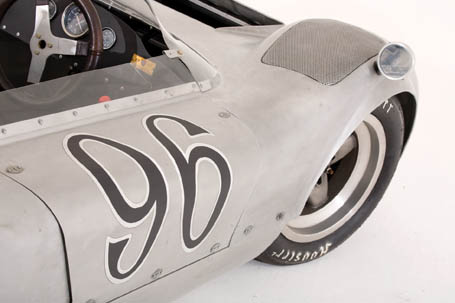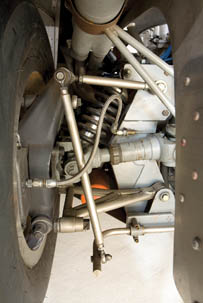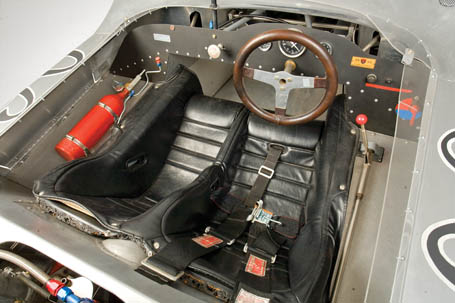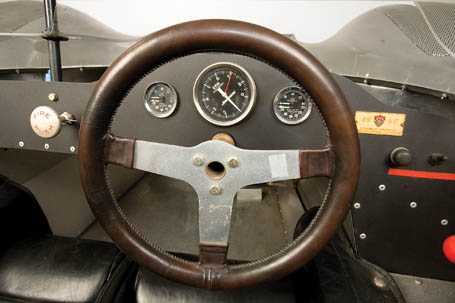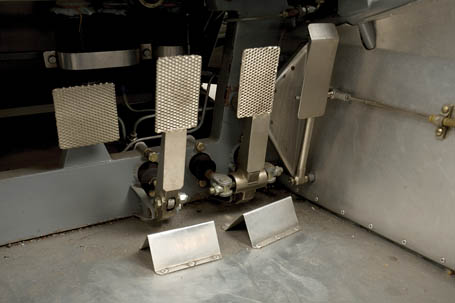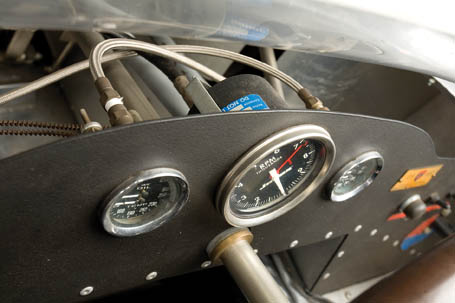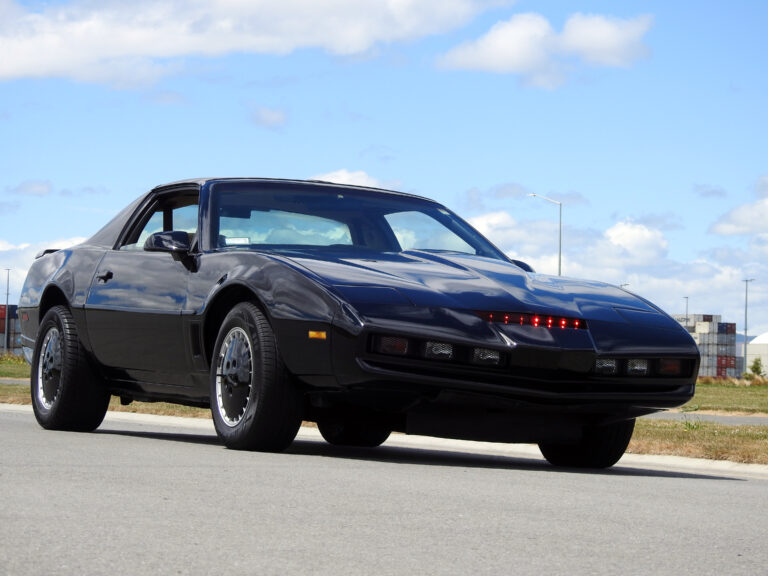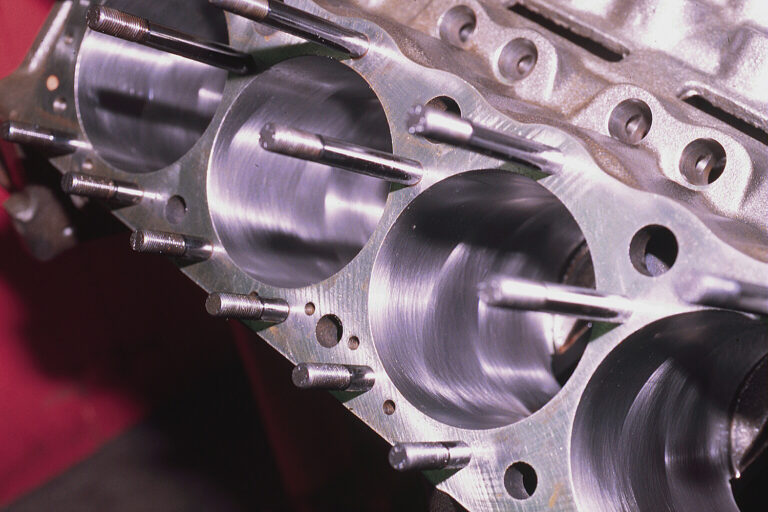data-animation-override>
“Published in New Zealand Classic Car Issue No. 214”

First raced in the US by Mike Goth in 1965, this early CanAm McLaren now resides in its spiritual home — New Zealand
In 1961, Jack Brabham left Cooper Cars to found his own racing organisation. The gap left by Cooper’s world champion driver was taken over by Bruce McLaren. However, even at that time Bruce was having his doubts about the Cooper organisation, feeling that its rate of development was too slow to match the ever-changing face of Formula One racing.
It all came to a head in 1963 when Bruce wanted to build two Coopers for the upcoming Tasman Series, suggesting that a pair of 2.5 single-seaters could be run under the works banner in New Zealand and Australia. John Cooper may have been persuaded to support this scheme but, at the time, he was still convalescing from a road accident. John’s father, Charles, had the last word — and, quite simply, he felt that the standard Cooper F1 would be sufficient. He didn’t want to spend any extra money.
Bruce didn’t agree, and like his Australian mentor, Brabham, he decided to set up his own racing team. So he founded Bruce McLaren Motor Racing Ltd alongside Teddy Mayer — the older brother of fellow Cooper racing driver, Timmy.

Together with mechanics Tyler Alexander and Wally Wilmott, McLaren built a pair of 2.5-litre cars for the Tasman Series; one for Bruce, the other for Timmy Mayer. The two McLaren cars proved their worth and, despite the tragic loss of Timmy following a crash at Longford in Tasmania, Bruce went on to win the Tasman Cup — ably proving he was capable of leading a competitive racing team.
As Bruce’s personal secretary, Eoin Young, would say later: “The die was cast. He had proved to himself that he knew enough about racing now to build his own cars and run his own racing team.”
Seeking the CanAm dollars
After the end of the Tasman Series, Bruce remained in New Zealand still recovering from the shock of losing his friend, Timmy. However, he was also thinking about the future of his racing team, and considered building a car for the upcoming F2 series. Bruce’s Kiwi mechanic, Wally Wilmott, had another suggestion — what about building a sports racing car with the popular USRRC series in mind? As well, with CanAm on the horizon, going in that direction could be lucrative.
Bruce’s enthusiasm for the idea quickly grew, and before long he arranged to buy the Zerex Special — a Traco-Olds-powered sports car owned by Mecom in the US. Teddy Mayer, who had returned to his homeland after the Tasman Series, brokered the deal and the car was soon sitting in Bruce’s freshly acquired workshop at New Malden in the UK.
There the car was converted to Appendix C specs, repainted green — jokingly named the Jolly Green Giant — and was soon being track-tested at Oulton Park. For the May Silverstone meeting the car was fitted with a 2.7-litre Climax engine, but the Traco-Olds 3.5-litre unit would be pressed into service again after Alexander and Wilmott redesigned the car’s chassis to combat a lack of torsional rigidity in the original design.
In this form, the Cooper-Oldsmobile (as Bruce insisted the car be called) was flown out to Mosport in Canada for McLaren’s North American debut. It was a good start, Bruce winning both 100-mile heats.
The MkI McLaren
With the success of its initial attempt at sports car racing in the Zerex, the fledgling McLaren Racing team began work on its first McLaren sports car — the MkI. A simple space-frame consisting of round and square mild steel tube was designed by Bruce McLaren and welded together. This chassis was underpinned with magnesium alloy sheeting and topped with a fibre-glass body.
Front suspension was by upper and lower wishbones while the rear featured lower wishbones, single top links and twin parallel radius rods. Adjustable Armstrong co-axial coil springs and dampers were used front and rear, with braking taken care of by Girling disc brakes. The prototype car sat on Cooper wheels until the familiar, four-spoke Owen Maddock-designed McLaren cast wheels appeared.
Power from the prototype car’s 3.9-litre Traco-Olds V8 and its battery of 48 IDA Weber carburettors was fed to a Hewland HD transaxle, and around 231kW (310bhp) was on tap.
There was also an upward path for the car — Traco Engineering in the US was already working on a 4.5-litre version of its engine.
This first McLaren sports racer was painted black and silver — good Kiwi colours — and made its race debut, also at Mosport, on September 26, 1964.
Although a throttle linkage failure relegated Bruce to third place at Mosport, he broke the lap record no less than seven times as he chased the eventual winner, Jim Hall’s Chaparral. The car also performed well at Riverside and Laguna Seca, before retiring from both races. However, at the Nassau Speed Week — with the car now painted a lurid shade of orange-red — the prototype of the soon to be famous McLaren orange — the M1A came good, with Bruce finishing a creditable second behind Roger Penske’s Chaparral.
After this promising season in the US, Bruce was soon thinking about building ‘customer’ racing cars but his small team would be unable to productionise the McLaren sports car as well as run its European racing programme. As a consequence of this, in late 1964 a deal was reached with Frank Nichols of Elva Cars, which resulted in Elva’s parent company, Lambretta-Trojan, being contracted to build cars for McLaren.
As an interesting side note, when the Elva crew — and stylist Tony Hilder — set to work on the first Elva-McLaren, they discovered that Bruce had produced no design drawings for the M1A. To make things even more difficult, the only M1A that existed at that time (McLaren would later build another works M1A) was racing in the US. As a result, Hilder didn’t even have an actual car to base his design upon — just a handful of photographs. Once he had returned from the US, Bruce inspected the new car, pronounced himself unhappy with it and promptly ordered a number of detail changes.
After much burning of the proverbial midnight oil, the first example of the new car, named the McLaren-Elva-Oldsmobile, was displayed at the London Racing Car Show in January 1965.
(Read Eoin Young’s McLaren Memories side-bar, for an insider’s view of the first McLaren sports racer.)
The scene was now set for McLaren’s dominance of the upcoming CanAm series — and the rest, as they say, is motor sport history; which leads us to the subject of this feature.
McLaren-Elva #20/14 History
Kiwi race enthusiasts will remember Mike Goth for his part in the 1970 F5000 Tasman Series in which he raced a Surtees TS5-Chevrolet, Goth’s best placing being a third at Teretonga behind the McLaren M10As of Graham McRae and Ron Grable.
However, five years before Goth arrived on New Zealand soil, he had forged a Kiwi connection when he purchased a McLaren-Elva-Oldsmobile MkI (chassis # 20/14), which he bought through Walt Boyd — a mechanic who was friendly with McLaren Racing team member, Teddy Meyer.
The car arrived in Goth’s home base — New York — during August 1965, and he got his first taste of the McLaren at Lime Rock during a test session the following month.
The McLaren received its racing baptism on October 1965 at Kent, Washington, and apparently right from this first race Goth was unhappy with the car’s aerodynamics, commenting that the body had too much lift. With this in mind — along with a change in regulations which scrapped the need for CanAm cars to carry a spare wheel — Goth decided that he needed to upgrade the car to the newer M1B specs; which promised better stability at racing speeds.
However, it proved impossible to purchase a new M1B body from McLaren — not too surprising as the McLaren-Elva MkII (the customer equivalent of the M1B) would not enter production until after all four works cars had been constructed and were racing. Instead, Goth commissioned Wally Peat of Seattle to fashion an aluminium body for the car, to be based on McLaren’s design. Interestingly, all the works M1Bs carried aluminium rather than fibre-glass bodies.
Apparently, Peat built two replacement bodies although what became of that second body is unknown. Additionally, Goth must have had access to the works M1Bs because, as well as the new body, he also got his service crew — Trevor Harris and Bruce Burness — to widen the car’s front and rear track, a feature of the works M1Bs that would never be carried onto the McLaren-Elva MkII. McLaren increased front and rear track by one inch over the M1A, Goth went further and widened the track by almost 1.5-inches. It is also believed that, at this stage, Goth replaced the car’s original Oldsmobile engine with a Chevrolet V8 — once again in line with the works M1Bs which, although originally engineered to accept the 4.5-litre Traco-Olds, were reworked in 1966 to accept a larger capacity Chevrolet V8.
In this new form the McLaren, now effectively a close replica of a works M1B — but entered for the CanAm series as the Mike Goth Special — was raced by Goth at Kent, Bridgehampton, Laguna Seca, River
side, Mosport and Las Vegas in 1966. At these races, the McLaren appeared in bare aluminium, carrying the number 96.
Looking at contemporary photographs of the car during this time, it is apparent that Goth was still chasing aerodynamic perfection as the car appeared with a bewildering variety of spoilers and air dams.
Halfway through the 1966 CanAm season, he painted the car bright red. Although Goth believed that his modifications had greatly improved the McLaren, the pairing was never a contender for outright victory — Goth’s best finish being a third at Bridgehampton in 1966. As he would later say — “Innovative we were, successful we were not!”
By 1967, the McLaren was dressed in a coat of orange paint — perhaps matching the famous McLaren papaya orange? However, the car — never really competitive — was now up against later and more superior McLaren CamAm cars, and in the middle of the 1967 season Goth replaced it with a new Lola T70.
Pulling it Apart
The McLaren now fell into the hands of Los Angeles-based racer Jim Paul, who would continue to campaign it during the remainder of the 1967 CanAm season and through into 1968.
During this time, Paul removed the car’s aluminium body and replaced it with a McLaren M6B body, this later shape providing better downforce. Alas, even in this much modified form, the McLaren was a back-marker and in 1969 Paul removed the car’s Chevrolet engine and transaxle, fitting them into a F5000 single-seater which he would then race throughout the ’70s. With the McLaren well and truly cannibalised, parts that were not used for the F5000 car were stored until finally sold in the Los Angeles area.
The Restoration
From that point, the McLaren drifted into limbo and would not reappear until 1987, when a California-based car restorer and racing enthusiast, Mike Blackie, rediscovered it in a workshop in central California. Blackie began to make enquiries, and found that the parts were for sale. A deal was agreed upon and the remains of the old CanAm warrior were shipped to the workshops of Blackie Enterprises Inc.
Bill Moir, a race car and McLaren restoration expert based in Salinas, California, was called in to examine the remains. As you can imagine, the McLaren-Elva was in very poor shape, with many parts — including the engine, transaxle, brake callipers, alloy wheels and gauges — missing. The custom-built body had also suffered the ravages of time; the aluminium body was missing both doors, and cracks had appeared in the wheel arches.
Major restoration of the car commenced in 1988, with Bill Moir tackling the frame — luckily the McLaren had never been involved in a major accident, so its frame was in good shape, although some rust was discovered in the water-carrying tubes. Moir would also remanufacture many of the missing or damaged suspension parts.
Mike Blackie’s company handled all the remaining mechanical and fabrication work, but the project would not be completed until the spring of 1992.
During the four-and-a-half-year restoration project, Blackie stripped all the remaining parts down to bare metal and crack-tested everything before reassembly.
Through Charles Agg of the McLaren by Trojan Manufacturers’ Register, Blackie was able to obtain original pattern four-spoke alloy wheels and new Smiths gauges.
Once the car was complete, Agg would also provide a new chassis plate and McLaren nose and steering wheel badges.
With the body and suspension carefully rebuilt, a replacement Chevrolet V8 was fitted to the car. Supposedly, this ‘new’ engine was a 4785cc (292ci) V8 lifted from a Chevrolet truck, but a search of the engine’s serial number tells a different story and the engine now in the McLaren could be either a 1969 4949cc (302ci) Z28 Camaro V8 (although this would be a very rare engine); a 1969 5359cc (327ci) truck or industrial engine; or a 1969-’80 5735cc (350ci) Corvette engine. The date code stamped on the engine is D10 3, which gives a casting date of April 10, 1973. In all probability, this means the engine in the McLaren started life as a 5735cc, 142 or 186kW (190hp or 250hp) Corvette engine.
Back on Track
With the McLaren returned to its M1B guise— carrying #96 on its bare aluminium bodywork — Blackie ran it at historic events in 1992. Mike Goth’s first race appearance in the McLaren had been at Kent in 1965 and, coincidentally, the restored car’s first outing would also be at the Seattle Historics at Kent.
Blackie reported that the car ran very well at this meeting, although he noted that it was very difficult to drive due to a very harsh ride. The following year, the McLaren was also raced at historic meetings at Monterey and Portland where, once again, its harsh ride was a major handicap. Later investigation showed that the cause of this problem was due to excessive spring rates and incorrect steering geometry. Once these problems had been addressed, the McLaren’s handling proved very predictable, with a tendency towards oversteer.
Blackie continued to campaign the McLaren at historic CanAm meetings until 1996 and, although he says the car was fun to drive, it remained uncompetitive against the later, big-block CanAm race cars.
With the McLaren no longer being raced, it finally found a new home at Fantasy Junction, a specialist classic car and historic racing car dealership based in Emeryville, California. The owners of Fantasy Junction had intended to return the McLaren to historic racing, but in March 2007 it caught the eye of visiting New Zealander, Paul Halford. Paul began negotiations and, after a long and chequered career in the US, the McLaren was eventually shipped to its spiritual home — New Zealand. Paul has already started the process of preparing the McLaren for the race track, and hopes to compete in a few local events this coming season — once he’s got a few track test days under his belt in order to master the beast. His ultimate aim is to compete in the 2010 Tasman Revival, and he would also like to take a trip to the US with the McLaren; the thought of winding the old CanAm car through the corkscrew at Laguna Seca is, understandably, very tempting.

